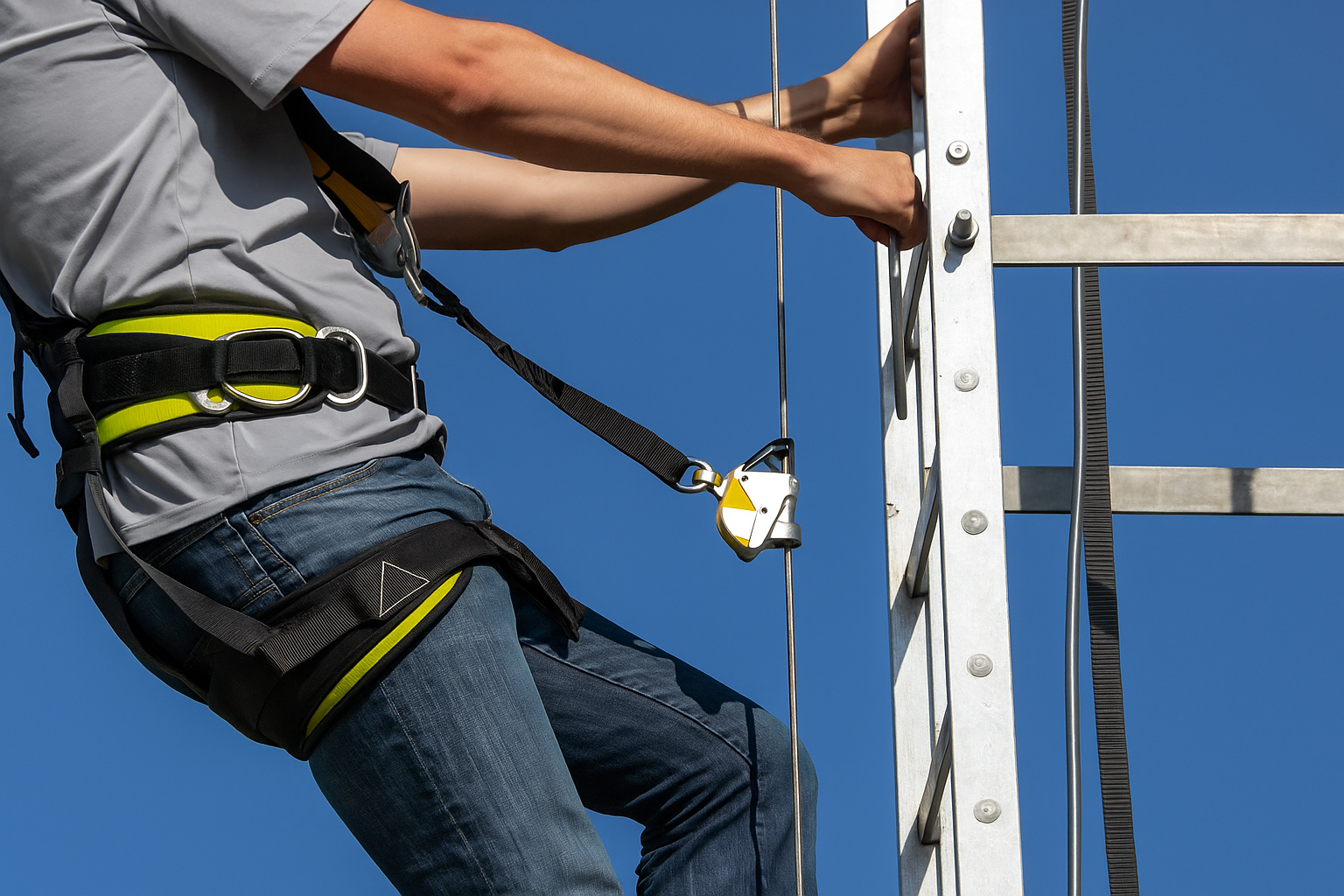Complete Guide to Vertical Lifeline Systems

Vertical lifeline system installation for construction and industrial safety
Vertical lifeline systems are critical safety components for workers who need to climb towers, buildings, or other vertical structures. This comprehensive guide covers everything you need to know about vertical lifeline systems, their installation, and safety best practices.
What is a Vertical Lifeline System?
A vertical lifeline system is a fall protection system designed to protect workers climbing or working on vertical surfaces. It consists of a flexible or rigid track that runs vertically along the climbing route, allowing workers to attach their personal fall arrest equipment for continuous protection during ascent and descent.
Types of Vertical Lifeline Systems
1. Cable-Based Systems
- Wire Rope Systems: Most common type using galvanized steel cables
- Synthetic Rope Systems: Lightweight alternatives using high-strength synthetic materials
- Guided Type Systems: Feature shuttle devices that move along the cable
2. Rigid Rail Systems
- Aluminum Rail Systems: Lightweight and corrosion-resistant
- Steel Rail Systems: Heavy-duty systems for demanding applications
- Track-Based Systems: Enclosed track systems for maximum protection
Key Components of Vertical Lifeline Systems
Essential Components:
- Anchor points (top and bottom)
- Lifeline cable or rail
- Intermediate brackets and supports
- Mobile fall arrester or shuttle
- Tensioning system
- Energy absorber
Personal Equipment:
- Full body harness
- Connecting device (lanyard or SRL)
- Carabiner or connector
- Helmet and other PPE
Installation Requirements and Standards
Indian Standards Compliance
- IS 3521: Code of practice for safety in building construction
- IS 15871: Personal fall protection systems
- Factory Act 1948: Safety provisions for industrial workplaces
- Contract Labour Act: Safety requirements for contract workers
Installation Best Practices
- Structural Assessment: Ensure mounting structure can support minimum 22 kN loads
- Anchor Point Spacing: Intermediate supports every 8-10 meters maximum
- Clearance Requirements: Maintain minimum 2.5 meters swing clearance
- Access Points: Provide safe access to top and bottom anchor points
- Weather Protection: Consider environmental factors and corrosion protection
Safety Procedures and Usage Guidelines
Pre-Use Inspection Checklist
Daily Inspection Points:
- Check lifeline for cuts, fraying, or damage
- Inspect anchor points for looseness or corrosion
- Verify mobile fall arrester operation
- Check personal harness and connections
- Ensure proper tension in the system
- Verify clearance areas are free of obstacles
Proper Usage Techniques
- Attachment: Connect mobile fall arrester before starting climb
- Climbing: Maintain three points of contact when possible
- Positioning: Keep fall arrester above work position
- Movement: Move smoothly to avoid shock loading
- Emergency: Know rescue procedures and emergency contacts
Applications and Industries
Construction
- Building construction
- Bridge work
- Tower crane access
- High-rise maintenance
Industrial
- Tank and silo access
- Chimney maintenance
- Tower inspections
- Equipment servicing
Infrastructure
- Telecommunication towers
- Power transmission
- Water towers
- Wind turbines
Maintenance and Inspection Schedule
| Frequency | Inspection Type | Key Focus Areas |
|---|---|---|
| Daily | User Inspection | Visual check, operation test |
| Weekly | Detailed Inspection | Component wear, connections |
| Monthly | Thorough Inspection | Structural integrity, documentation |
| Annual | Competent Person | Complete system evaluation |
Common Issues and Troubleshooting
Solutions: Clean system, apply approved lubricant, inspect cable condition
Solutions: Adjust tension, add intermediate brackets, check anchor stability
Cost Considerations and ROI
While vertical lifeline systems represent a significant investment, they provide excellent return through:
- Reduced Insurance Costs: Lower premiums due to improved safety
- Compliance Benefits: Avoid penalties and work stoppages
- Productivity Gains: Faster, safer access to work areas
- Reputation Protection: Demonstrate commitment to worker safety
Expert Tip:
Always involve a qualified engineer in system design and installation. The structural integrity of anchor points is critical for system performance and worker safety.
Conclusion
Vertical lifeline systems are essential safety equipment for any work involving vertical access. Proper selection, installation, and maintenance ensure reliable protection for workers at height. Regular training and adherence to safety procedures maximize the effectiveness of these systems.
Need Help with Vertical Lifeline Systems?
HSSPL provides complete vertical lifeline solutions including design, installation, and maintenance services. Our certified engineers ensure compliance with all safety standards.
Contact Our Safety Experts